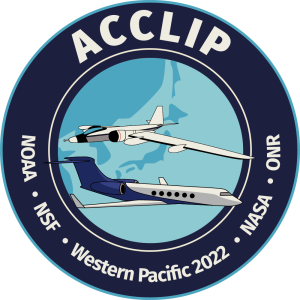The National Aeronautics and Space Administration (NASA) and the National Science Foundation's National Center for Atmospheric Research (NCAR) will conduct a jointly funded two-month campaign in Summer 2022* in the Republic of Korea: the Asian Summer Monsoon Chemical & CLimate Impact Project (ACCLIP). Two aircraft (the NASA WB-57 and the NCAR G-V), outfitted with state-of-the-art sensors, and approximately 80 scientists from the US and other international research organizations will participate in ACCLIP.
The Asian Summer Monsoon (ASM) is the largest meteorological pattern in the Northern Hemisphere (NH) summer season. Persistent convection and the large anticyclonic flow pattern in the upper troposphere and lower stratosphere (UTLS) associated with ASM leads to a significant enhancement in the UTLS of trace species from pollution and biomass burning origins. The monsoon convection occurs over South, Southeast, and East Asia, a region of uniquely complex and rapidly changing emissions tied to both its high population density and significant economic growth. The coupling of the most polluted boundary layer on Earth to the largest dynamical system in the summer season through the deep monsoon convection has the potential to create significant chemical and climate impacts. An accurate representation of the ASM transport, chemical and microphysical processes in chemistry-climate models is much needed for characterizing ASM chemistry-climate interactions and for predicting its future impact in a changing climate.
Scientific Objectives:
- To investigate the transport pathways of ASM uplifted air from inside of the anticyclone to the global UTLS.
- To sample the chemical content of air processed in the ASM in order to quantify the role of the ASM in transporting chemically active species and short-lived climate forcing agents to the UTLS and determine their impact on stratospheric ozone chemistry and global climate.
- To obtain information on aerosol size, mass and chemical composition necessary for determining the radiative impact of the ASM, for constraining models of aerosol formation and for contrasting the organic-rich ASM UTLS aerosol population with that of the background aerosol population.
- To measure the water vapor distribution associated with the monsoon dynamical structure to evaluate transport across the tropopause, and determine the role of the ASM in water vapor transport into the stratosphere.
- Ken Jucks (NASA HQ - Upper Atmosphere Research Program)
- Sylvia Edgerton (Atmospheric Chemistry, National Science Foundation, NSF)
Co-Principal Investigators: Laura Pan (NCAR), Paul Newman (NASA GSFC)
Co-Investigators: Elliot Atlas (Univ. Miami), William Randel (NCAR), Brian Toon (CU), Troy Thornberry (NOAA)









